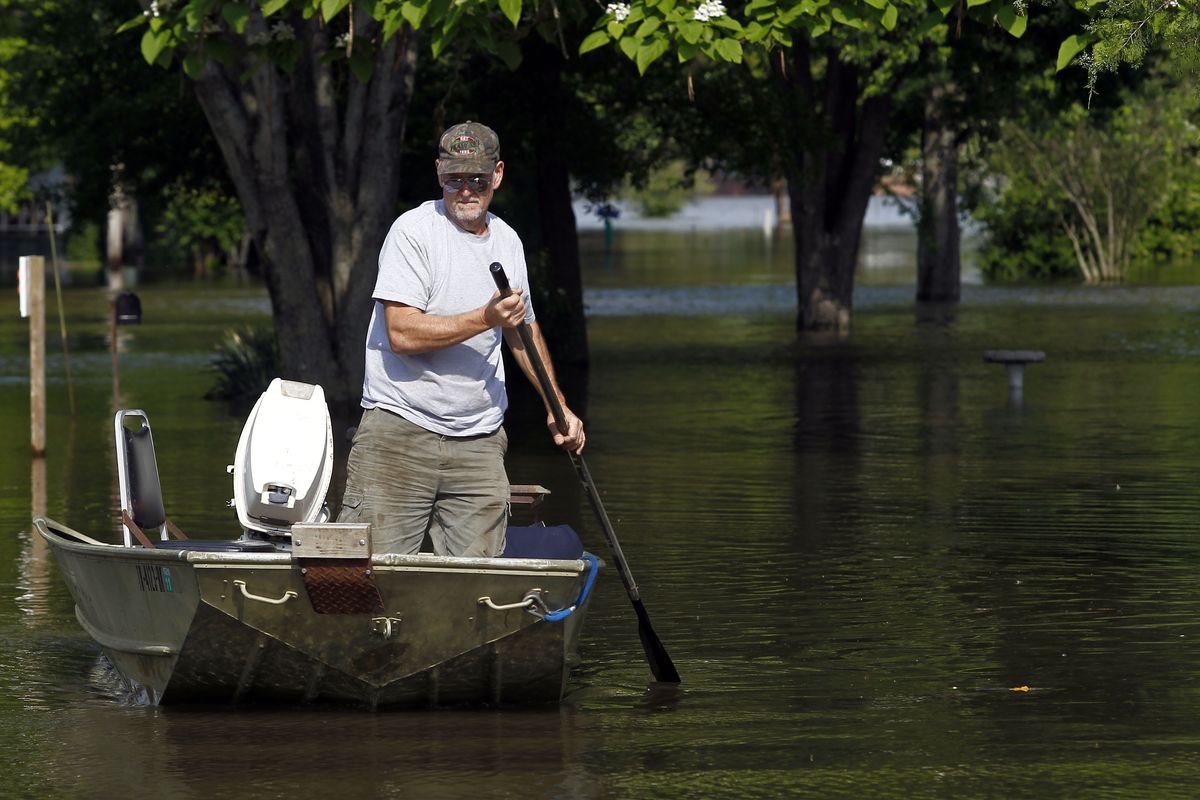Relief for some as river danger moves south
Memphis readies for crest near 1937 record

TIPTONVILLE, Tenn. – As Memphis readied for the mighty Mississippi to bring its furor to town, some Kentucky residents upstream returned to their homes Saturday, optimistic the levees would hold and that they had seen the worst of the flooding.
In the small town of Hickman, Ky., officials and volunteers spent nearly two weeks piling sandbags on top of each other to shore up the 17-mile levee, preparing for a disaster of historic proportion. About 75 residents were told to flee town and waited anxiously for days to see just how bad the flooding would be.
By Saturday, the levee had held, and officials boasted that only a few houses appeared to be damaged. More importantly, no one was injured or killed.
“We have held back the Mississippi River and that’s a feat,” Fulton County’s emergency management director Hugh Caldwell said. “We didn’t beat it, but it didn’t beat us. We’ll call it a draw.”
Downstream, though, there was danger, in places like Memphis, the Mississippi Delta and Louisiana. In Arkansas, authorities recovered the body of a man who drove around barricades earlier in the week and was swept away by floodwaters when he tried to walk out.
Memphis Mayor A.C. Wharton warned residents in low-lying areas to evacuate, and nearby, Shelby Mayor Mark Luttrell said the community was “facing what could be a large-scale disaster.”
Record river levels, some dating as far back as the 1920s, were expected to be broken in some parts along the river. In Memphis, the river was expected to crest at 48 feet by Tuesday, just shy of the 48.7-foot record from the devastating flood of 1937.
About 100 miles to the north, residents in Tiptonville, Tenn., were hopeful as the river levels started to fall.
Janice Spence, 60, was working the cash register at the Health Mart pharmacy downtown, just a couple blocks from her home. She was satisfied with the preparations officials have made, but still has her grandson’s boat parked beside her house and has packed clothes and toiletries in case she needs to leave.
“I believe them when they say everything’s going to be OK,” she said. “I think they’ve done everything that’s humanly possible to keep it from coming into town.”
Like many other areas along the Mississippi, the town wasn’t completely spared. In Tiptonville, an estimated one-fifth of the town has suffered some flooding. All told, 75 homes have been swamped.
Tiptonville is on the banks of the Mississippi and at the shore of Reelfoot Lake. Many residents work in farming – there are about 100 in the county – or at two state prisons, but fewer than a quarter of residents 16 and older are employed, according to census data.
Elsewhere, officials in Louisiana warned residents that even if a key spillway northwest of Baton Rouge was opened, residents could expect water 5 to 25 feet deep over seven parishes. Some of Louisiana’s most valuable farmland is expected to be inundated.
To the north in Arkansas, a portion of Interstate 40 remained closed, and the road might not be reopened until Tuesday.
“It is pretty much a nightmare,” said Arkansas State Highway and Transportation Department spokesman Glenn Bolick. “You’re taking 35,000 vehicles a day from a heavily traveled interstate and putting them onto a two-lane highway. It’s not an ideal situation.”
So far, most towns along the banks of the big river have been spared calamitous floodwaters.